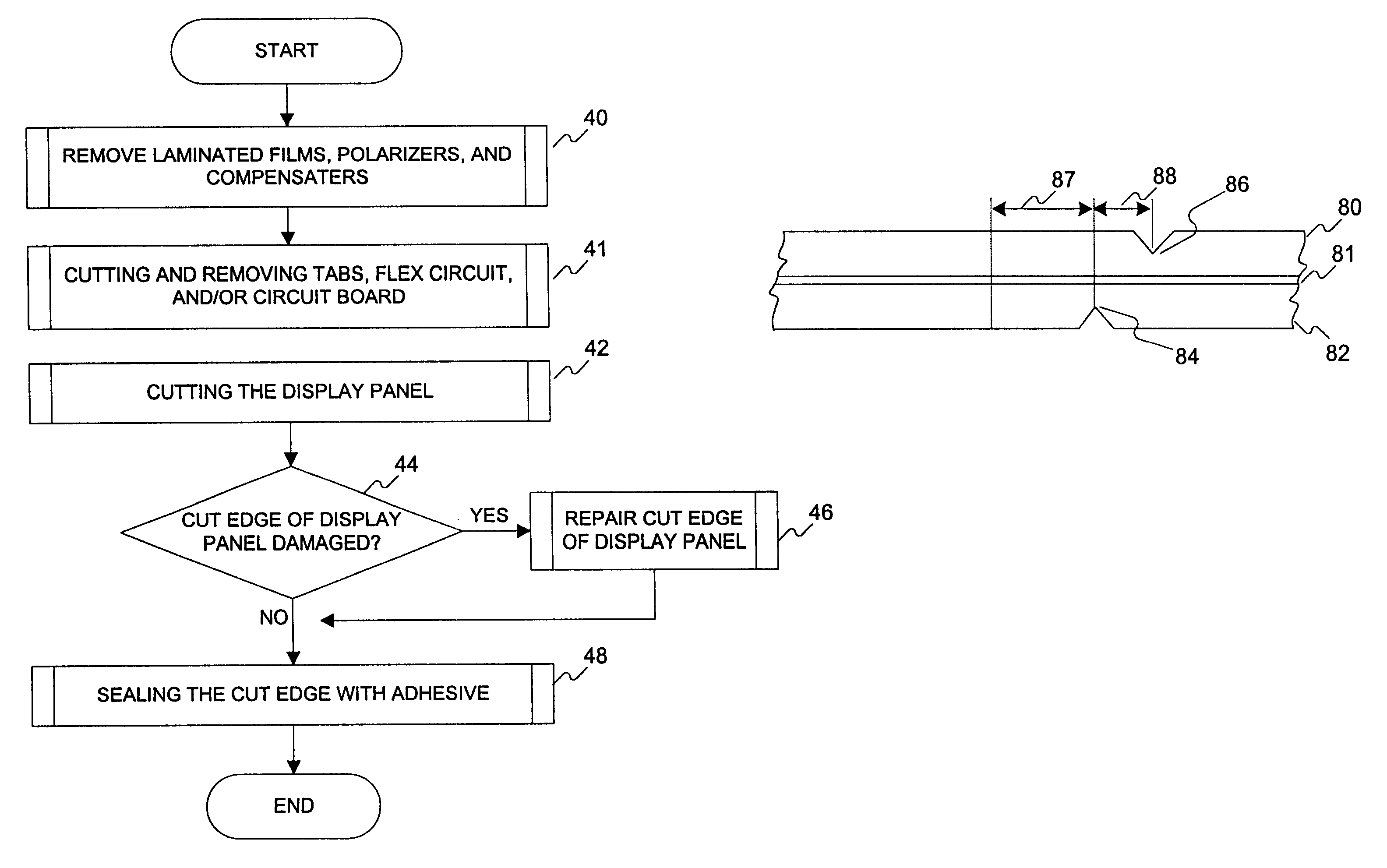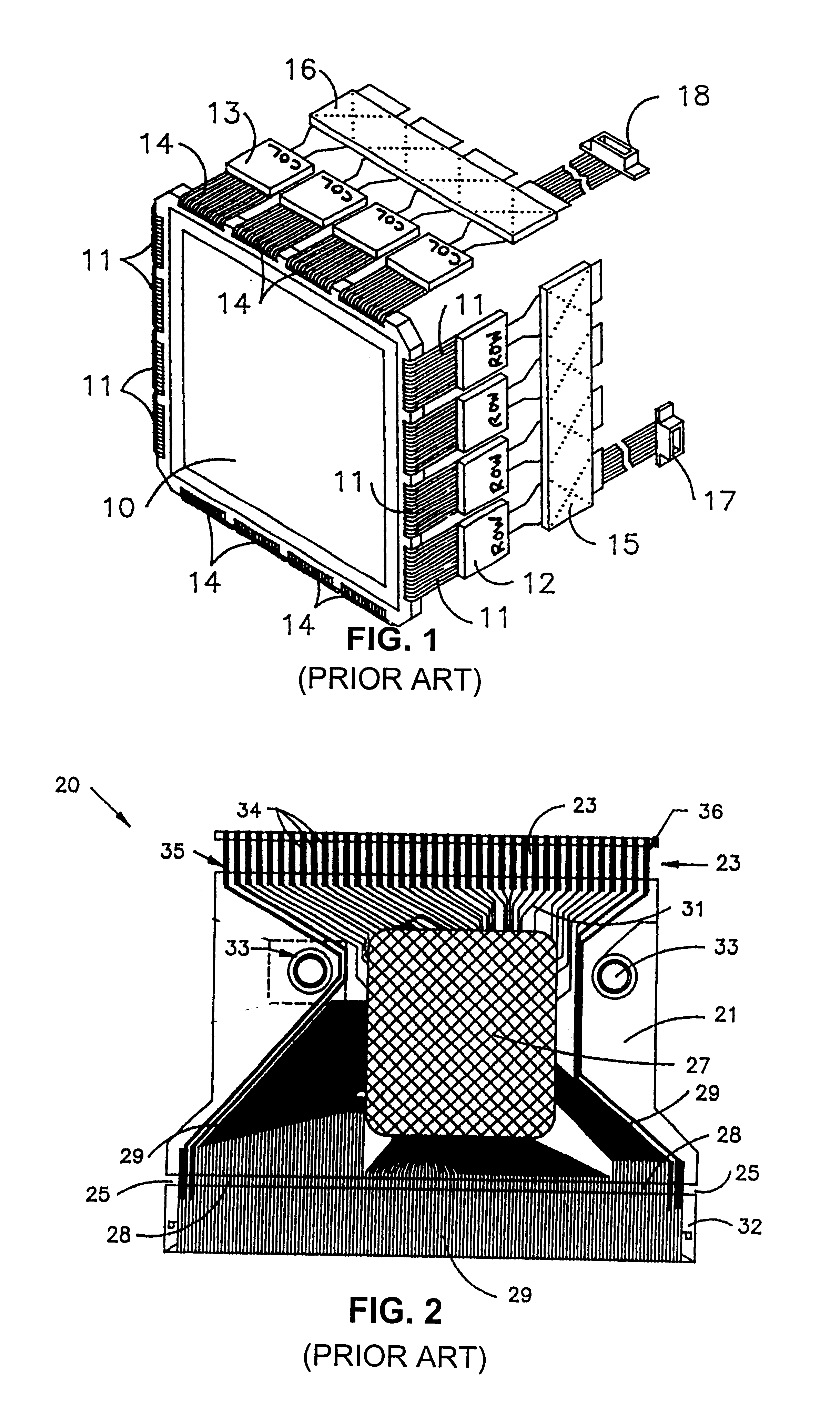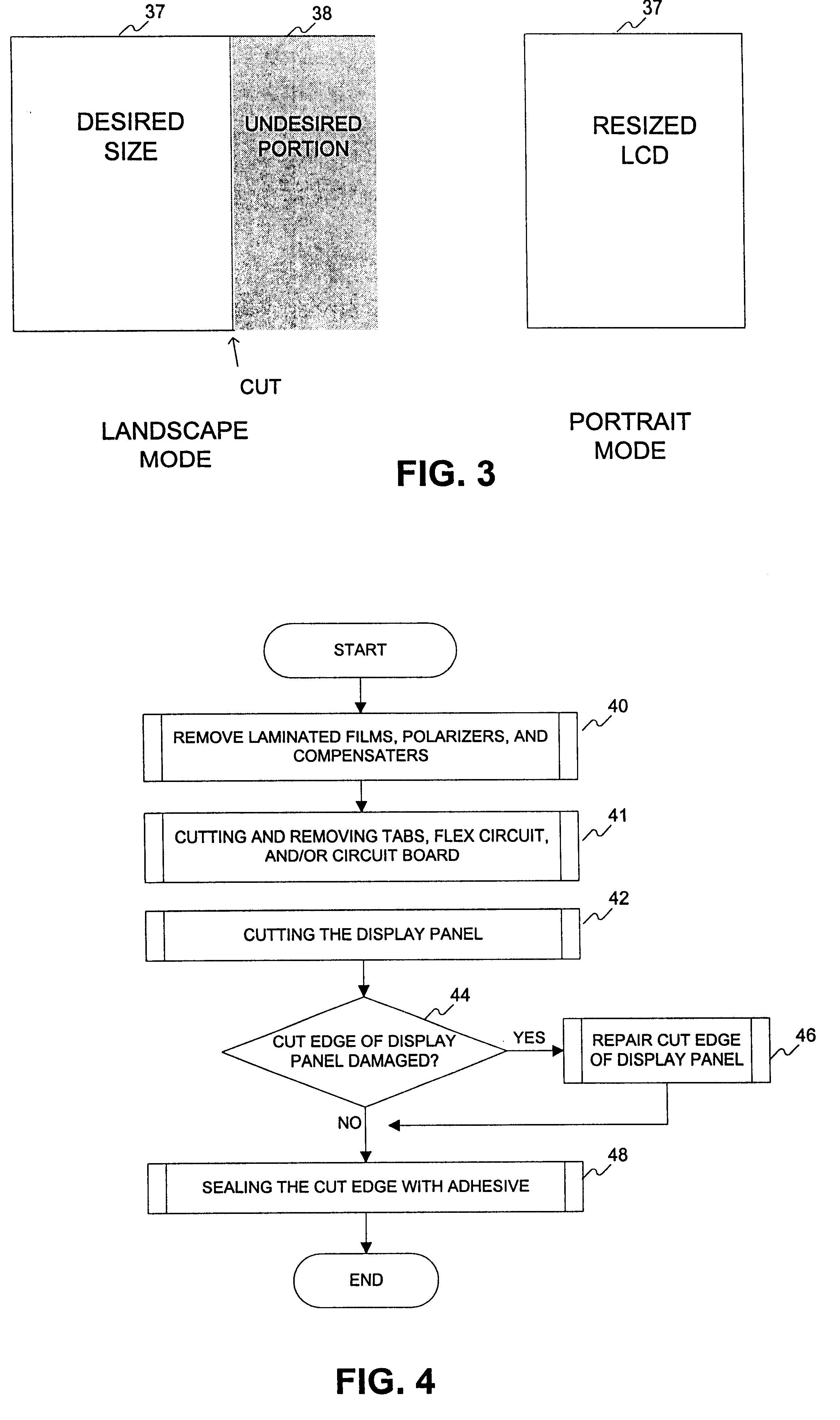Method of resizing a liquid crystal display
a liquid crystal display and resizing technology, applied in static indicating devices, instruments, non-linear optics, etc., can solve the problems of lcd unusability, lcd damage to the active plate, and many obstacles in resizing an lcd
- Summary
- Abstract
- Description
- Claims
- Application Information
AI Technical Summary
Problems solved by technology
Method used
Image
Examples
Embodiment Construction
Turning again to the drawings, in which like reference numerals identify similar or identical elements throughout the several views, the present invention provides a method of reducing, or resizing, an oversized LCD to conform to size constraints. Referring again to FIG. 3, an overall size of the LCD is reduced to a desired size 37 by removing an undesired portion 38. In some cases, the aspect (width vs. height) of the LCD may change from landscape (aspect>1) to portrait (aspect<1) or may become square (aspect=1).
FIG. 4 outlines an overall procedure for resizing an LCD. In Step 40, the polarizer (and compensator) films are removed from the top and bottom substrates in the area to be cut. In step 41, the TABs, flex circuit and / or circuit board are cut and the undesired portions are removed. The display panel is then cut in step 42, and the cut side is examined for damage and resulting gas bubbles. If gas bubbles are detected, the edge is repaired in step 46. The cut edge is then seal...
PUM
 Login to View More
Login to View More Abstract
Description
Claims
Application Information
 Login to View More
Login to View More - R&D
- Intellectual Property
- Life Sciences
- Materials
- Tech Scout
- Unparalleled Data Quality
- Higher Quality Content
- 60% Fewer Hallucinations
Browse by: Latest US Patents, China's latest patents, Technical Efficacy Thesaurus, Application Domain, Technology Topic, Popular Technical Reports.
© 2025 PatSnap. All rights reserved.Legal|Privacy policy|Modern Slavery Act Transparency Statement|Sitemap|About US| Contact US: help@patsnap.com



